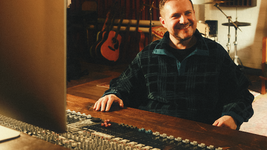In Conversation with Mayara Magri, First Soloist of the Royal Ballet
- Audrey Lemarchand
- Feb 15, 2019
- 8 min read
In many businesses and corporations, staff is organised by hierarchy. Large ballet companies such as the Royal Ballet make no exception and are structured similarly. In most cases, dancers first join the Royal Ballet as ‘Artists’, eventually being promoted gradually to ‘First Artists’, ‘Soloists’, ‘First Soloists’ and, finally, the most gifted become ‘Principal’ dancers. A dancer’s rank speaks to their responsibility within the company and the roles they dance on stage: being a member of the corps de ballet (let’s say, one of the thirty-two swans in Swan Lake) or being the lead dancer (who would take on the double role of Odette/Odile - also sometimes referred to as the Swan Queen).

Mayara Magri
Mayara Magri is a twenty-four-year-old from Brazil who spends most of her days right across the street from Strand in Covent Garden; a routine that might sound familiar to most King’s students. However, Mayara is a First Soloist of the Royal Ballet and rather than hanging out in lecture theatres, she can usually be found working in dance studios. As a First Soloist, she has moved on from corps de ballet work to soloist roles.
In the current run of Don Quixote at the Royal Opera House, Mayara will debut as Kitri, the ballet’s lead female role. She took some time right before this important step in her career to tell us a bit more about herself, her dancing and her life in London.
As many professional dancers, Mayara started dancing in her childhood as an after school activity. Coming from a family with little knowledge of ballet, she and her sisters had scholarships to study at a dance school in Rio de Janeiro. Dancing seemed to have rapidly taken over an increasing part of Mayara’s life; ‘my teachers really just pushed for me in Brazil’ she explains. This led Mayara to take part in competitions that she sees as ‘a way of getting yourself out there and getting stage experience’.
Such a high level of commitment to ballet in order to achieve excellence does not go without concessions; 'At the time I just went with it because I really enjoyed dancing’.
Mayara easily got on with the idea that her afternoons and evenings were all booked for training, and that she squeezed her homework during lunch breaks at school. Her deep commitment to dancing also left less time to develop friendships. Mayara recalls declining going to the cinema or spending time with classmates. Nonetheless, an ad hoc support system of ballet school friends flourished instead, without forgetting Mayara’s sisters who were dancing as well.
Prix de Lausanne 2011 - Classical Selections - Mayara Magri
In 2011, aged sixteen, Mayara competed at the Prix de Lausanne - the most demanding ballet competition in the world. Over the course of six full days, young dancers between fifteen and eighteen-years-old are assessed over ballet classes, contemporary dance classes, training sessions and stage performances. Mayara won the Prix’s First Prize, which comes with a scholarship and the liberty to choose a dance school to study at. From Brazil, through Switzerland, Mayara was now headed to London.
Prix de Lausanne 2011 - Contemporary Selections - Mayara Magri
‘I always had it in my head that I wanted to come to the Royal Ballet’. Mayara was first introduced to the Royal Ballet watching DVDs of the company’s productions given to her by her ballet teacher. She used the recordings to ‘learn one bit, watch them do it, I had to do my ballet homework’. The young aspiring ballerina was absolutely ‘amazed by the company’ and her dream of one day joining the Royal Ballet grew and strengthened.
While watching the Royal Ballet DVD recordings back in Brazil, Mayara fell in love with the ballet La Bayadere. Last autumn, she debuted on the Royal Opera House main stage as Gamzatti, one of the ballet’s soloist roles. Beyond the amazing opportunity such a role offers a young dancer, ‘it was incredible to have that connection from 10 years ago, watching that DVD, learning that role and now doing it at the Royal Ballet’.

Mayara Magri as Gamzatti and Lauren Cuthbertson as Nikiya in La Bayadere, photo by Bill Cooper
However, back in 2011, teachers instead encouraged Mayara to study in the United States at San Francisco Ballet or American Ballet Theatre, thinking the American style would be more appropriate for her. Mayara’s teachers perceived her dancing to be ‘a bit more free’, fearing that ‘the English style would be a bit too proper’ and that she ‘would struggle to learn it’. The Director of the Royal Ballet School had been very supportive, speaking to Mayara’s teacher, insisting she should join the school. Just like that, it seems like Mayara’s idea of joining the Royal Ballet became reciprocal! Mayara admits having received much support from the Royal Ballet School staff, encouraging her to graduate into the company. So when the incumbent and incoming Directors of the Royal Ballet ‘both came and watched the dance class, … I got the contract. That was in January 2012’ recounts Mayara, who was seventeen-years-old at the time, and had landed her first job.
Mayara fully sustains her choice of finishing her dance training years in the English style. In Brazil, she had been taught the Russian ‘Vaganova technique, which is a bit more like the American style: longer legs, pushing for leg extensions and high jumps’, while ‘the English style is much more contained, focusing a lot on the lines (of the body), the little details’. Having retained the Russian demonstrative style from her early training years in Brazil, and also having adopted some English touches and learned ‘a lot from their way of dancing’ at the Royal Ballet School, Mayara feels ‘like now I got a bit of both, which is something different that not many people have’.

The Two Pigeons. James Hay as the Young Man, Mayara Magri as the Young Woman. ©ROH, 2015. Photographed by Bill Cooper
Already taking on soloist roles in Brazil as soon as she was ‘a bit better than the others’, Mayara would also sometimes take the lead at the Royal Ballet School. Joining the company then felt like being ‘at the head of the chain and going straight back to the back of the line’. Candidly Mayara admits: ‘I’m not going to say it felt amazing but I was so overwhelmed by being at the Royal Ballet, being in London’. She persevered: ‘so I always tried to do my best, even in a very little role, making the most of it’. A ballet dancer’s first company years seem invaluable: 'you learn so much, being involved with the girls that work so hard in the company: we were on every single night: thirty shows of Swan Lake in two months.’ This adds up to one show every two days, and considering each performance lasts three hours and requires ongoing and permanent physical effort from the corps de ballet dancers, Mayara recalls those years as being very busy. She explains that even though it was tough, she in no way regrets it. Self-admittedly ambitious, she knew she wanted to do more and felt like she could do it. Now, dancing soloist roles, Mayara explains being in the corps requires discipline considering dancers are on stage every night; it might ‘not be as much pressure but you’re constantly on’.

Don Quixote. Marianela Nunez © ROH, Johan Persson
Mayara is now preparing for her next big step: taking on the lead role for the full-length of a ballet in three-acts: Kitri in Don Quixote. Beyond the immense excitement, Mayara is ‘looking and studying the role’. It seems like the role will fit like a glove: ‘I feel like I have so much of Kitri in me’. Now, Mayara is focusing on ‘how to play it, how to make it believable, free and special’ and however tough and physically demanding the role may be, Mayara feels fit for it as she has been given roles of that level of difficulty in the past couple of years.
As for all performers, playing a role leaves leeway for Mayara to interpret Kitri as she feels she should, which will be ‘young, fresh, flirty’. The story takes place in a nineteenth-century fantasized version of Spain. There is little to no ballet production of Don Quixote in which Kitri is seen without her fan, but Mayara’s Kitri will use her fan ‘not because she’s warm, just because it’s her way of flirting’. Mayara explains she will not be playing an experienced sexy femme fatale but rather a spontaneous and inexperienced naïve character who ‘falls in love for the first time’.

The Ilustrated 'Farewell'. Mayara Magri. ©ROH, 2017. Photographed by Tristram Kenton.
While the Royal Ballet showcases many narrative ballets throughout the season, such as Don Quixote, it also invites neo-classical and contemporary choreographers to create new pieces for the company. These tend to be abstract sometimes, without a story line, requiring the dancers to engage with interpretation and artistry in another way.
For Mayara, ‘it is a lot easier when you get to interpret something, when you get to play a role or play with a role!’ Taking up on her recent experience playing Gamzatti in La Bayadere, a narrative ballet where every pantomime (a mime movement with specific significance) holds a meaning in the narrative, Mayara remembers ‘wow… it is just a lot stronger’. When it comes to entirely physical abstract work, Mayara explains, ‘I still try to find some reason why I am doing that movement, because I feel it just makes it more believable’. A few months ago, in Infra, by Resident Choreographer Wayne McGregor, Mayara danced a pas-de-deux with Marcelino Sambé. She explains ‘there wasn’t any story to tell really, but because of my physical work and Marcelino’s physical work, as well as the way the choreography was, we kind of created a conversation where we were uncomfortable, where we were having a bit of a fight ’ in the dancing. However abstract the choreography may seem, the interpretative artistic work the dancers make transpires nonetheless and give these works their full emotional force.

Corybantic Games. Marcelino Sambé & Mayara Magri. © ROH, 2018. Photographed by Andrej Uspenski.
Outside of dancing at the Royal Ballet, Mayara enjoys ‘a lot of yoga’. As many millennials, she was introduced to the activity thanks to an app which makes it convenient for her to schedule and book classes. With other company dancers, while off-duty she also regularly attends theatre performances because ‘in London it’s so easy, there’s always something playing’. Mayara adds ‘films, exhibitions… you’re never bored in London are you?’ Mayara also made clear that ‘ballet dancers like to be lazy, whenever we have one day off we just like to rest’, although she adds, ‘even if it’s sitting in the couch and having to sew point shoes for the next morning’, incorporating rest into her dancer routine!
Right before we parted, I made sure to ask Mayara about some neighborhood tips. Make sure to try out the excellent coffee at 26grains in Covent Garden, but be weary of the line! And, saving the best for last (especially for our Waterloo campus based friends), Mayara recommends Yamagoya, next to the Young Vic, which serves Japanese ramen noodles, with seating on the balcony to enjoy the upcoming sunny days!
Edited by Evangeline Stanford, Digital Editor
Mayara Magri makes her debut as Kitri in Don Quixote on 30 March
Further reading: take a look at Strand's review of Don Quixote's opening night!
15 February – 4 April
Royal Opera House, Bow Street, Covent Garden, London WC2E 9DD
Tickets from £5
Live UK cinema relay on 19 February
For students:

































